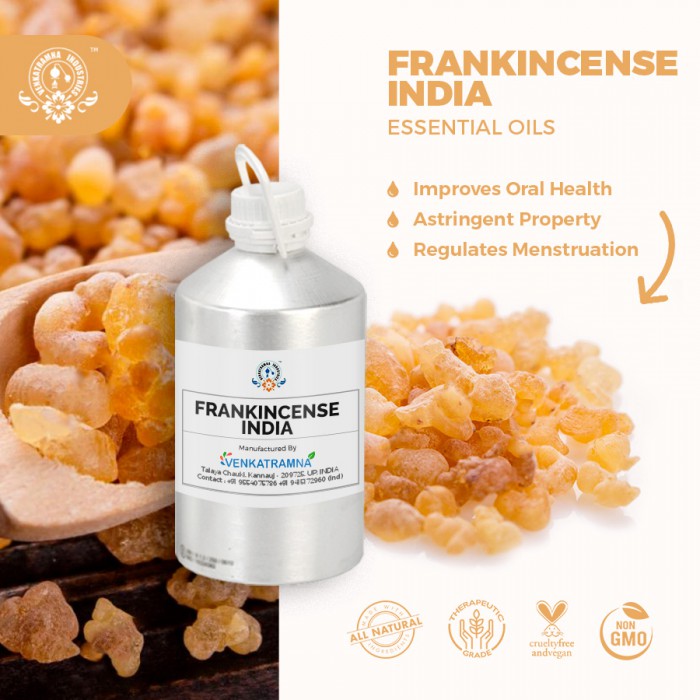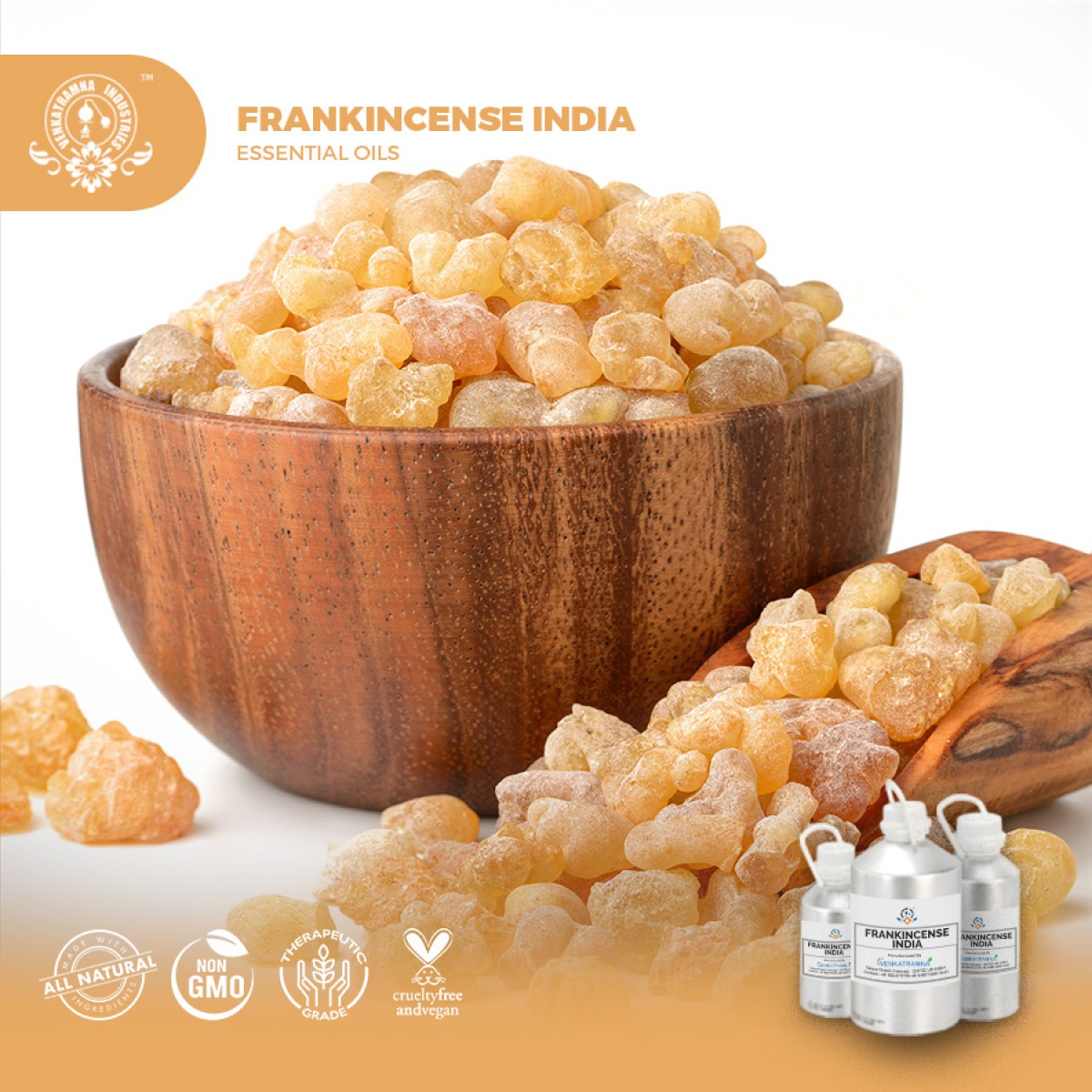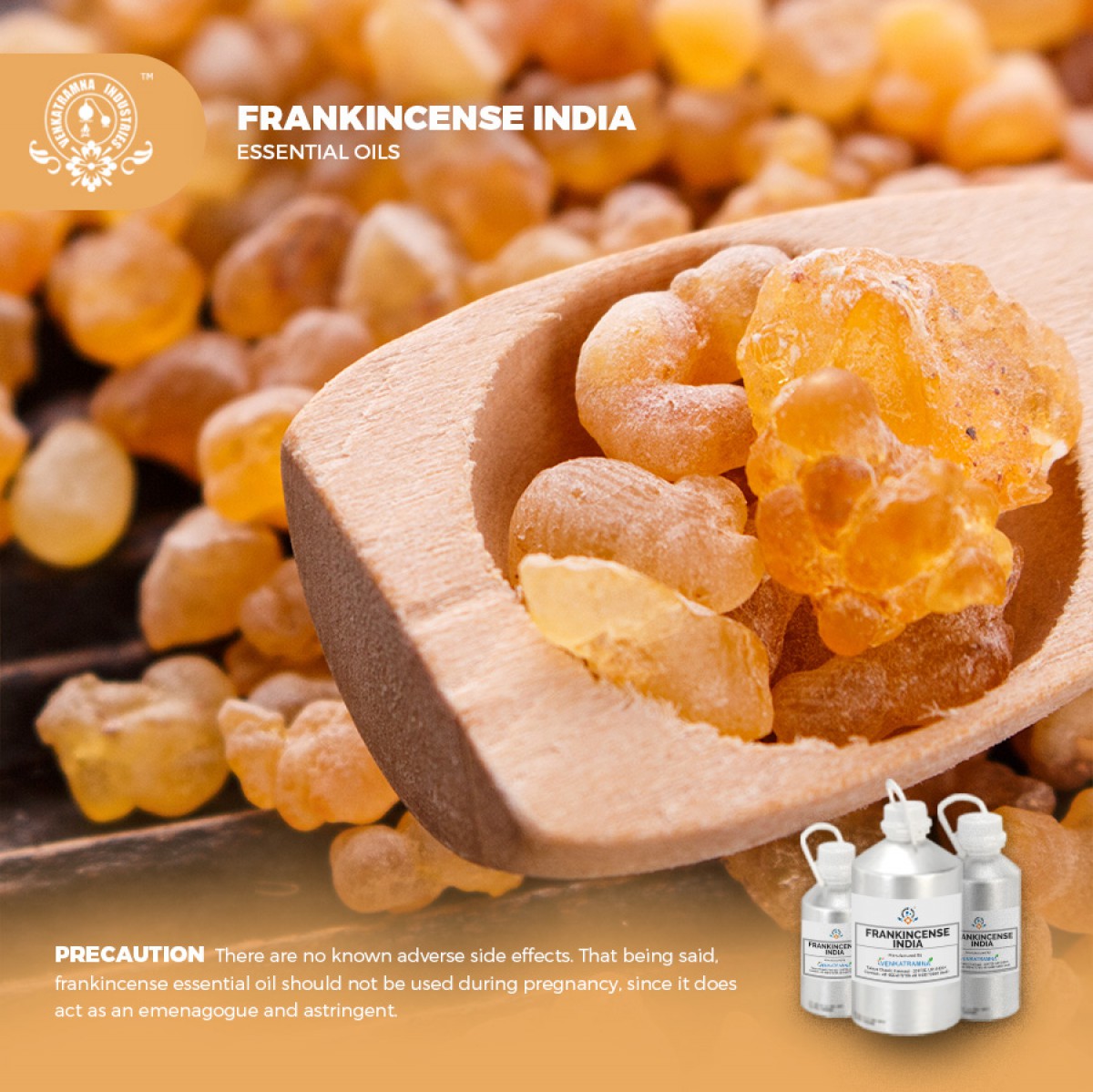Botanical Name: Boswellia serrata Common name: Indian oli-banum, Salai guggul, Salla Read More
|
Botanical Name: |
Boswellia serrata |
|
Common name: |
Indian oli-banum, Salai guggul, Sallaki, Indian
frankincense |
|
Plant family: |
Burseraceae |
|
Genus: |
Boswellia |
|
Appearance/Color: |
Colorless to
pale yellow liquid |
|
Odor: |
A base note with a
medium aroma, Frankincense Essential Oil has a warm and spicy, woody odor
that is haunting |
|
Blends With: |
Basil, Bergamot, Cardamom, Cedarwood, Chamomile, Cinnamon
Bark, Clary Sage, Coriander, Geranium, Ginger, Myrrh and Vanilla |
|
Origin: |
India |
|
Source: |
Resin |
|
Method of Extraction: |
Solvent Extraction |
Genus Boswellia is a genus in the Burseraceae family.
The genus is widespread in dry areas such as Arabia, northeastern coast of
Africa, and India. The species have been useful in traditional medicine for
treatment of in?ammatory diseases, including asthma, arthritis, cerebral edema,
chronic pain syndrome, gastrointestinal disease, tumors, and for
enhancing memory and learning function.
Boswellia, also known as Indian
frankincense, is an herbal extract taken from the Boswellia
serrata tree. is a moderate to
large sized branching tree that grows in dry mountainous regions of India,
Northern Africa and the Middle East. The family of Burseraceae is represented
in the plant kingdom with 17 genera and 600 species wide-spread in all tropical
regions. There are about 25 known species belonging to Genus Boswellia, most of them occur in Arabia, northeastern
coast of Africa and India. Since ancient times, three of these species have
been considered as ‘true Frankincense’ producing trees.
Boswellia serrata is one of the ancient and most valued herbs in Ayurveda. “Gajabhakshya”, a Sanskrit name sometimes used for Boswellia, suggests that elephants enjoy this herb as a part of their diet. Three renowned ancient texts form the pillars of classical Ayurvedic Science, which has its roots in India: Charaka's Charaka Samhita (c.B.C. 700), the first fundamental medical text; Susruta's Susruta Samhita (c.B.C. 600), which attempted to amass the entire medical knowledge, with special focus on surgery; and the two-volume tome comprising Astanga Samgraha and Astanga Hridaya (c.130-200 A.D.), written by Vagbhata the Elder and Vagbhata the Younger, which synthesized the works of Charaka and Susruta and summarized the eight parts of Ayurveda in prose and verse forms. The first two pillars of Ayurveda describe the antirheumatic (antiarthritis) activity of gugguls-the gum-resins of trees.
DISCLAIMER
The complete range of conditions
or methods of use are beyond our control therefore we do not assume any
responsibility and expressly disclaim any liability for any use of this
product. Information contained herein is believed to be true and accurate however,
all statements or suggestions are made without warranty, expressed or implied,
regarding accuracy of the information, the hazards connected with the use of
the material or the results to be obtained from the use thereof. Compliance
with all applicable federal, state, and local laws and local regulations
remains the responsibility of the user.
The FDA has not evaluated the
statements on this website. No claims are made by Venkatramna Industries as to
the medicinal value of any products from vriaroma.com or by us. The information
presented here is for educating our customers about the traditional uses of
essential oils and is not intended to diagnose, treat, cure, or prevent any
disease. You are responsible for understanding the safe application of these products.
If you have any questions, please call or email us for further information.
As per NAHA guidelines, New Directions Aromatics
(NDA) does not recommend the ingestion of essential oils. It is imperative to
consult a medical practitioner before using Essential Oils for therapeutic
purposes. Pregnant and nursing women and those taking prescription drugs are
especially advised not to use this product without the medical advice of a
physician. The oil should always be stored in an area that is inaccessible to
children, especially those under the age of 7.
Since time immemorial, plants and their products have been
the primary resource of food, shelter, clothing, flavors, fragrances as also
valuable ingredients for medicines for mankind. In this context, natural resins
have played an important role. These have also been used as adhesives, as
ingredients for cosmetic preparations, as fragrances in daily rituals and in
religious ceremonies, as coating materials and also for their different
curative powers. The Frankincense resins are the common resins used since
ancient times.
Frankincense Essential Oil in
Pharma
In addition to its beneficial use for arthritis, this gummy
resin is also mentioned in traditional Ayurvedic and Unani texts as an
effective remedy for diarrhoea, dysentery, ringworm, boils, fevers
(antipyretic), skin and blood diseases, cardiovascular diseases, mouth sores,
bad throat, bronchitis, asthma, cough, vaginal discharges, hair-loss, jaundice,
hemorrhoids, syphilitic diseases, irregular menses and stimulation of liver. It
is also diaphoretic, astringent, diuretic and acts both as internal and
external stimulant. Modern medicine and pharmacology strongly point out to its
use as an antiarthritic, antiinflammatory, antihyperlipidemic (controls blood
lipids), antiatherosclerotic (anticoronary plaque), analgesic (pain-reliever)
and hepatoprotective (protects the liver).
Essence of Frankincense
Essential Oil
The resin of Boswellia species
(‘frankincense’, ‘olibanum’) has been used as incense in religious and cultural
ceremonies since time immemorial. Its medicinal properties are also widely
recognized, mainly for the treatment of inflammatory conditions, as well as in
some cancerous diseases, wound healing and its antimicrobial activity.
COMMON USAGE
·
Anti-inflammatory
·
Boosts immune system
·
Astringent property
·
Regulates menstruations
·
Prevents gas buildup
·
Promotes digestion
·
Delays aging
·
Acts as tonic
·
Stimulates urination
·
Keeps uterus healthy
·
Speeds up healing
Ingredients:
|
S.No |
Key Constituents |
Strength (%) |
|
1 |
a-thujene |
19.2 |
|
2 |
a-pinene |
16.7 |
|
3 |
Terpinen-4-ol |
12.5 |
|
4 |
p-cymene |
9.5 |
|
5 |
d-3-carene |
3.7 |
|
6 |
Sabinene |
2.9 |
|
7 |
(E)-verbenol |
2.6 |
|
8 |
(P)-limonene |
2.2 |
|
9 |
b-thujone |
1.8 |
|
10 |
a-terpineol |
1.4 |
|
11 |
p-cymen-8-ol |
1.2 |
|
12 |
(z)-sabinol |
1.1 |
|
13 |
b-pinene |
1.1 |
|
14 |
Verbenone |
1.0 |
TOXICOLOGICAL
INFORMATION
Safety Summary
·
Hazards: Skin sensitization if oxidized.
·
Cautions: Old or oxidized oils should be
avoided.
Systemic Effects
·
Acute toxicity: No information found for
any frankincense oil. For a-pinene, the acute oral LD50 in rats has been
reported as 2.1, 3.2 and 3.7 g/kg; acute dermal LD50 in rabbits.
·
Subchronic toxicity: No information found
for any frankincense oil. Oral octyl acetate is not subchronically toxic in
rats at 500 mg/kg.
·
Carcinogenic Potenitial: Not listed as
Carcinogen
·
Skin corrosion/irritation: May be irritating to
skin.
·
Serious eye damage/irritation: May be irritating
to eyes. Prompt rinsing and removal of the substance will avoid damage.
·
Respiratory sensitization: Not applicable under
normal use.
·
Germ cell mutagenicity: Not specified
·
Carcinogenicity: Not Listed As Carcinogen
·
Reproductive toxicity: Not specified
·
STOT-single exposure: Not specified
·
STOT-related exposure: Not specified
·
Aspiration hazard: Not specified
·
Interactive effects Not specified
ECOLOGICAL
INFORMATION
·
Toxicity
Acute fish
toxicity:
LC50 / 96
HOUR – No data available
Toxicity to
aquatic plants – No data available
Toxicity to
microorganisms – No data available
Toxicity
threshold – No data available
·
Persistence and degradability:
Biodegradation is expected
·
Bio-accumulative potential:
Bioaccumulation is unlikely
·
Mobility in soil: Unknown
Do not allow the material to
enter streams, sewers or other waterways.





 MSDS-Frankincense.pdf
MSDS-Frankincense.pdf




